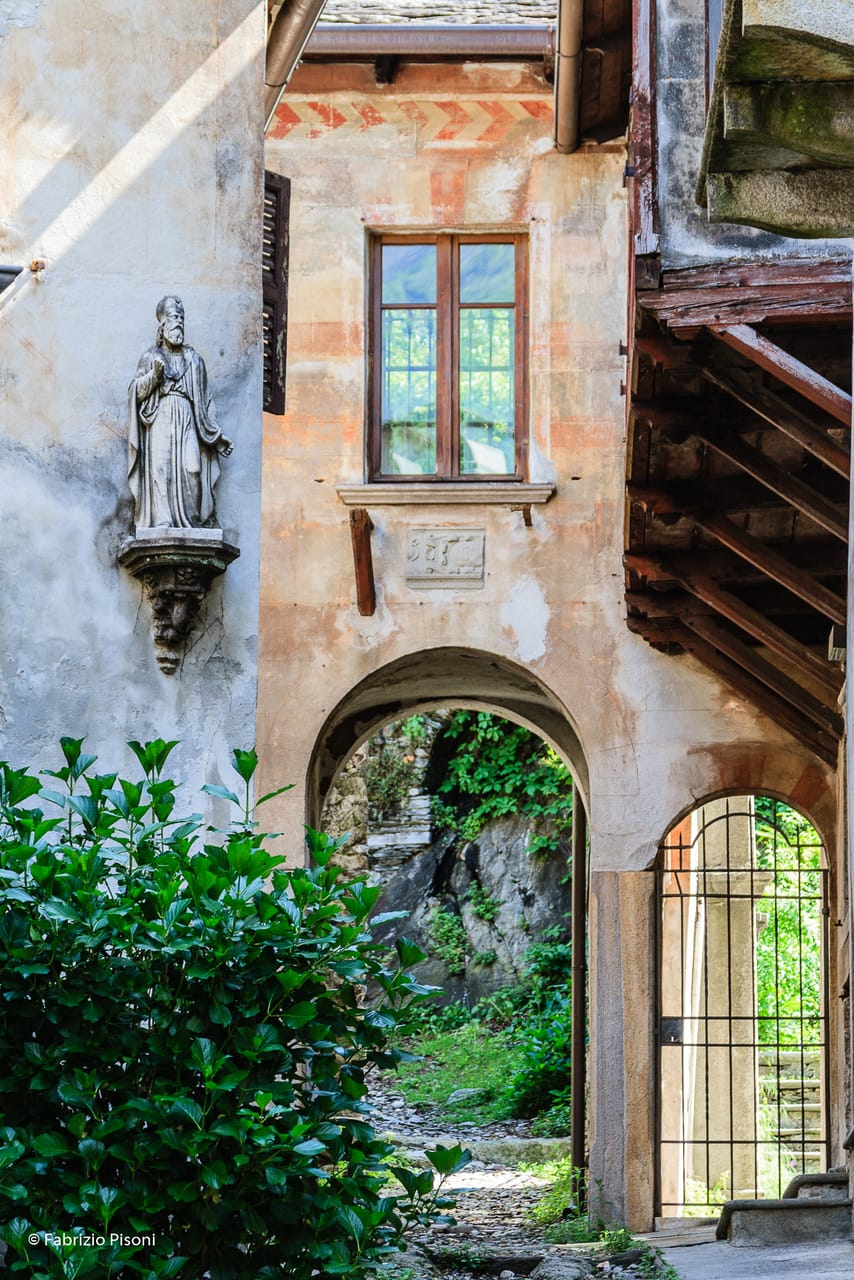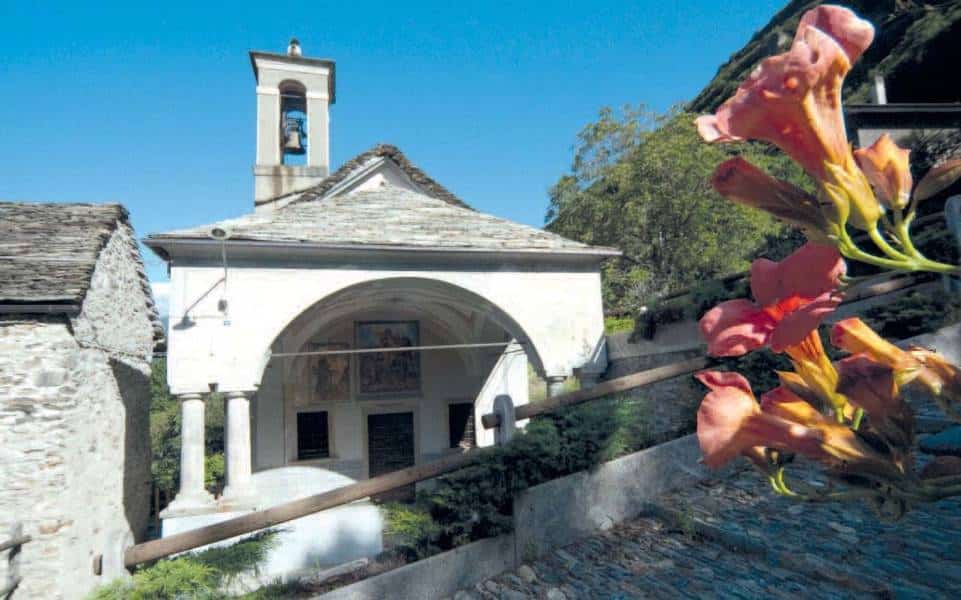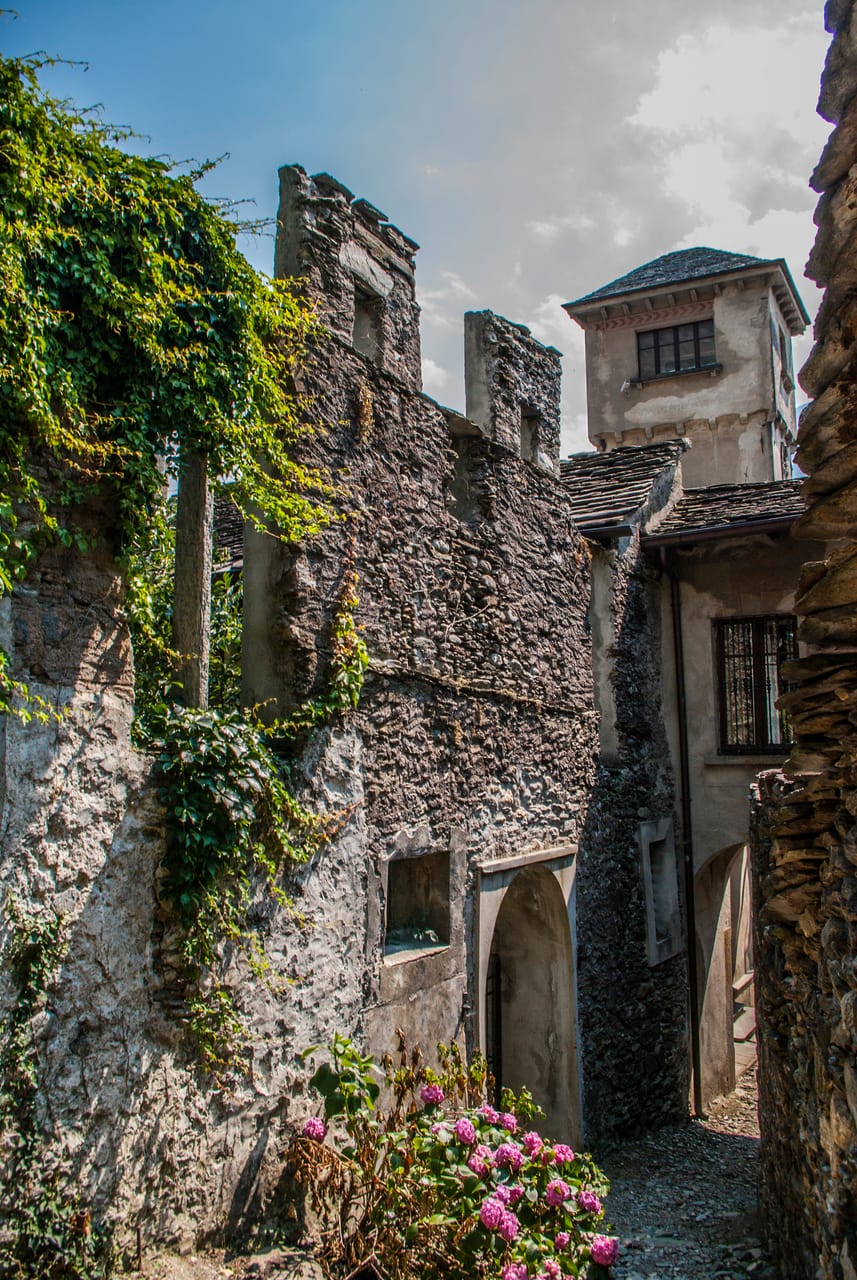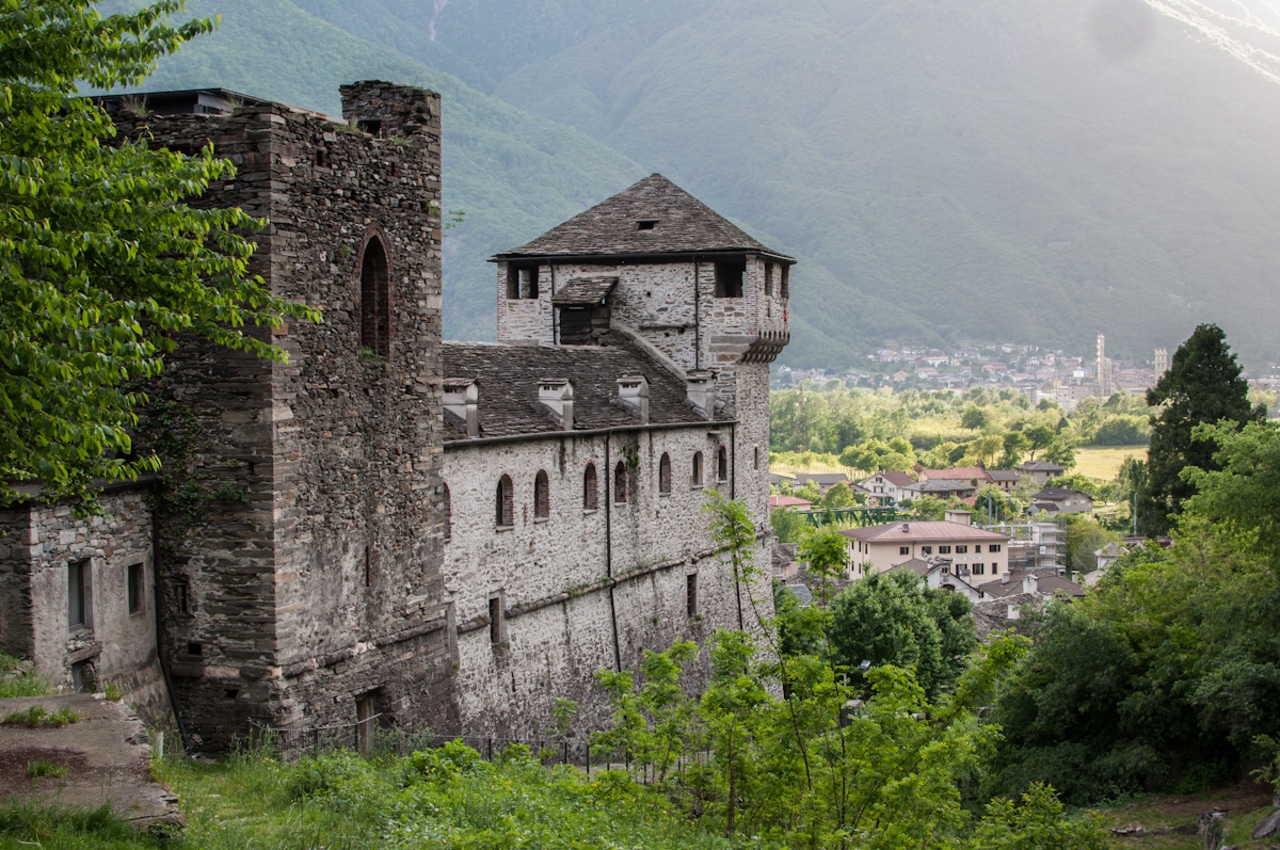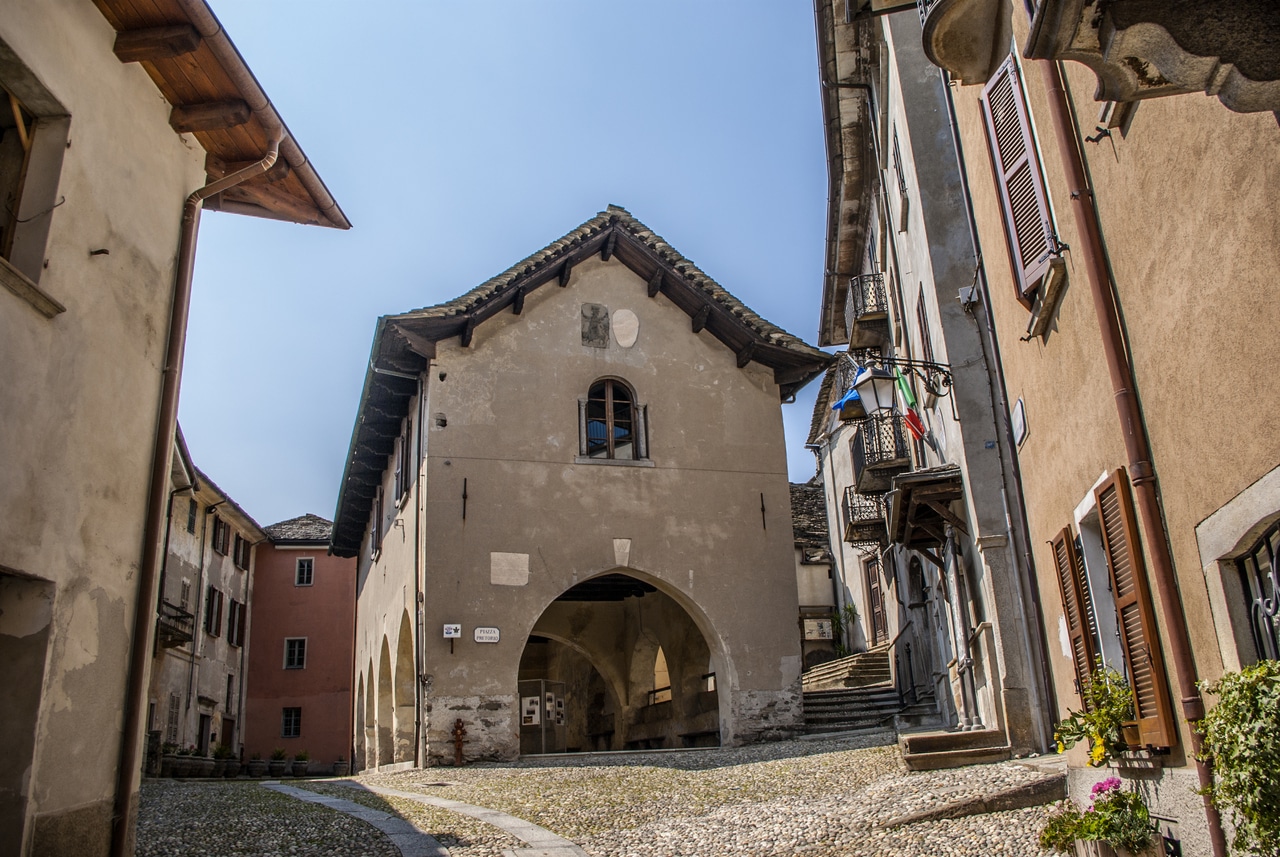Vogogna (Vogogna in Piedmontese, Vugògna in dialecto ossolano) is located in the center of the Val d'Ossola, in Piedmont.The toponym may derive from the name of the ancient people who lived in these lands before the Romans, Gauls Shad: Vallis Agonum, Valley of the Agons. A plaque dating back to 196 A.D. testifies Roman presence in Vogogna. The country, mentioned for the first time in a notarial document dated 970 d.C., remains a village of farmers up to the XIII century, when Vogogna, for its geographical location, is chosen as the capital of Lower Ossola. In 1375, the rivalry between Domodossola, capital of Upper Ossola and Vogogna, culminates with the sack of the latter on the part of opponents. In 1411 Vogogna rejected Swiss invaders but in 1416 they became allies against the upper Ossola. Between 1450-1535, during the domination of the Sforzas and under the government of the Borromeo (1416-1600) Vogogna became a flourishing village center of traffic and trades along the old road of the Sempione that crosses it. The period of relative economic prosperity and military importance, will last until the beginning of the Spanish domination (1535-1706).
The Visconteo Castle is built in 1348. The plan of the structure is irregular and reflects the topography of the land as well as the different phases of construction. Just above the castle are the ruins of the ancient fortress dating back to the IX-X century. The Praetorian Palace was also built in 1348. It is located at the foot of the staircase that leads to the castle. Was the seat until 1819 of the government of Lower Ossola. The building takes the architectural model of the Broletto lombardo and is supported by round arches resting on columns. Inside and outside are still partly visible fragments of ancient pictorial decoration including the Visconteo coat of arms at the top of the facade. The palace houses the inside the celtic Mascherone, soapstone, originally placed in the courtyard of the Church of San Pietro, where, at least from 1753, it was incorporated in a fountain. The mask is a male figure that could represent a god Silvestre, Cernunnos, or a Celtic hero.



